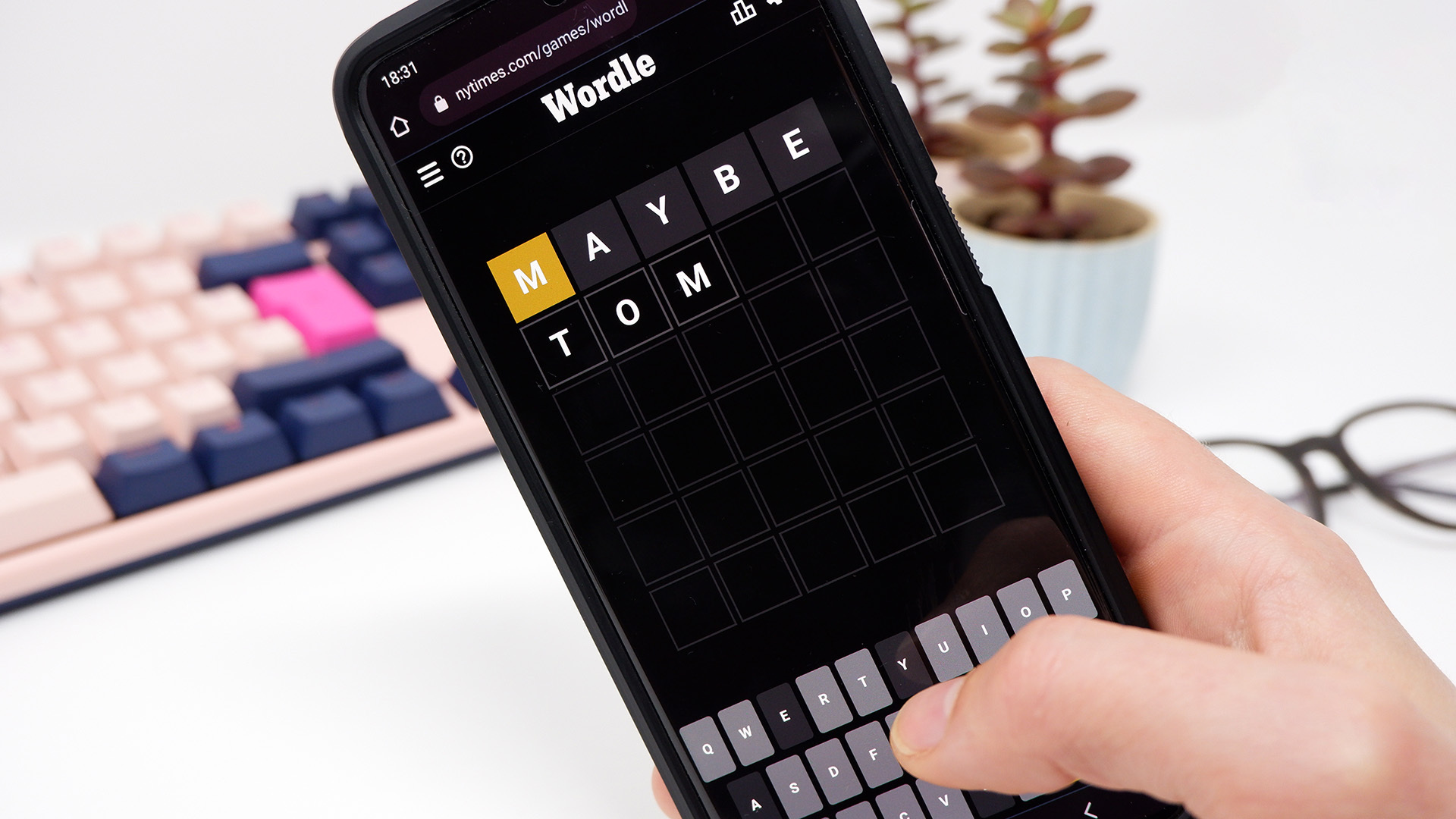Intel has announced Meteor Lake, its new generation of mobile chip and the first to use tiles—that’s Intel’s nickname for its 3D packaged chiplets, by the way. What caught my attention with Meteor Lake, and no doubt any PC gamer looking at the chip, is its large graphics tile. Powered by Intel Arc, replete with eight Xe-cores, and using a new(ish) architecture dubbed Xe-LPG, it looks like a step in the right direction for integrated graphics performance.
In its maximum eight-core configuration, Meteor Lake offers the equivalent of 128 EUs—32 more than Raptor Lake’s largest Iris Xe iGPU. It’s not only bigger, Intel says it’s been architected to run at a higher max clock frequency with a lower minimum voltage, too. There’s even eight Ray Tracing Units stuffed into the Meteor Lake GPU, though I wouldn’t necessarily bet on them being much help in Cyberpunk 2077.
For context, Intel’s top Arc desktop GPU, the Arc A770 has 512 EUs. Anyway, while Intel won’t give me all the juicy details of how Meteor Lake’s Xe-LPG GPU performs versus the current generation, according to Tim Wilson, VP design engineering group & GM SoC design at Intel, we can expect “for the first time, the architecture of our discrete graphics card is integrated into a thin and light SoC and will deliver the capabilities to provide up to 2x performance and 2x performance per watt versus our prior generation.”
I often use one of Intel’s Tiger Lake chips for a spot of light gaming on my work laptop and it’s an okay, if underpowered, experience—it’s hardly high-end gaming, but can sustain my attention for an hour of Crusader Kings or World of Horror. By most metrics, Meteor Lake should be a major improvement on that experience, but we don’t have to go entirely off Intel’s promises for performance. I had the chance to try Meteor Lake out in-game for myself at the event.
Running at 1080p with XeSS in Performance mode, Meteor Lake’s iGPU provided performance that was, dare I say, perfectly playable. I mean with recent AMD chips stuffed into handhelds and delivering impressive performance, perhaps it’s not such a shock that Intel’s eight Xe-core graphics tile can deliver. But there’s much more to be said for the playability of graphically intensive games on Meteor Lake than previous Intel iGPUs.
Of course, one important aspect of that performance picture is the XeSS upscaling, which has a limited roll out in games today. Meteor Lake’s graphics tile, sharing a lot with the Xe-HPG architecture on Alchemist graphics cards such as the Arc A770, supports DP4A instructions which help accelerate XeSS a little further, too. All of which seems pretty pivotal to my Dying Light 2 experience being actually pretty good.
(Image credit: Intel)
(Image credit: Intel)
(Image credit: Intel)
Intel had a video running of the game without the upscaling technology enabled, and it didn’t look like a game I’d be too keen on playing myself. For less intensive titles, sure I can see this working out, but for more demanding games that upscaling uplift looks more or less necessary. The good news is that Meteor Lake supports DP4A acceleration, used by XeSS to improve upscaling performance.
To find out more about Arc’s arrival on mobile and what that means for iGPU gaming performance, I caught up with Intel’s Tom ‘TAP’ Petersen at the event. As Petersen had already touted Meteor Lake as “the first time you can get real high-end gaming on an integrated graphics device” during a Forza Horizon 5 demo, the first question on my mind is whether this is genuinely an iGPU that gamers can get excited about.
“It really comes down to performance expectations,” Petersen says. “A lot of people are not playing, you know, high-end, triple-A games, looking for 4K displays and all the rest of it. If you’re playing at 1080p, and you’re looking for more of an esports title, it’s going to crush it.
“If you’re looking for games to play mobile, it’s going to be amazing. So I would say it’s really up to the user.”
(Image credit: Intel)
The big rumour leading up to Meteor Lake’s launch regarding performance was that the graphics tile could reach up to, or close to, the bottom rung of Nvidia’s RTX 30-series mobile chips, the RTX 3050. Well, Intel holds that it’s pretty close, too.
“We’re not that far from a 3050,” Petersen says with a smile, undoubtedly leaning into rumours of Meteor Lake’s performance that recently surfaced on the web. Though he reiterates that Intel’s really targeting 2x performance and 2x performance-per-watt versus Xe-LP.
“Our graphics are getting better at a rate that’s faster than say Moore’s law,” Petersen says. “And that’s pretty cool.”
And if you’re wondering whether this performance will be unleashed to its fullest by the chip’s drivers, there’s some hope there. The graphics tile on Meteor Lake, using the Xe-LPG architecture, and existing desktop Arc graphics cards use the same drivers.
(Image credit: Intel)
“It’s probably more accurate to think of it as an HPG designed with LP implementation details,” Petersen explains.
So what benefits one architecture, benefits the other. And as we already know, Intel has put in quite a bit of work already with beefing up its desktop graphics card driver stack. There’s still a ways to go, but Petersen is generally positive it’s a step to making the iGPU gaming experience better.
(Image credit: Future)
Best gaming PC: The top pre-built machines.
Best gaming laptop: Great devices for mobile gaming.
“There used to be compatibility questions like, you know, is my game going to launch right? And the truth is, it wasn’t a priority for that class of GPU which was much smaller. Now, we’re getting to be respectable performance for gaming, as you saw, and I think that’s going to start changing the mindset over time, but it’s not going to be overnight.”
Petersen tells me that it’s still likely that Meteor Lake graphics drivers will lag behind those for the desktop, citing validation and verification concerns in rolling out drivers to iGPUs versus the more simple desktop card lineup.
“But the key thing is it’s the same driver architecture. It’s the same driver development schedule. And you know, that will dramatically simplify our implementation.”
Though what still weighs down my excitement for Meteor Lake is the lack of hard figures for performance. Intel didn’t give us any at the event, leaving it up to my eyes alone while playing. There’s also the question of what SKUs will have all eight Xe-cores, and will they be power limited in laptops, or maybe even thermal throttled? There are a lot of question marks hanging over Meteor Lake’s actual gaming performance that remain even now, and I doubt gamers will be going out of their way to chase a Meteor Lake laptop down either way.
(Image credit: Intel)
There’s a good chance you won’t be able to find too many gaming machines with Meteor Lake alone in them, either. Manufacturers will favour a discrete GPU even alongside Meteor Lake on those more powerful machines that require graphical grunt, and Intel admits that sometimes it just comes down to consumer preference, demand for the Nvidia graphics experience and game support, or “they just like Jensen.”
Yet if I were to pick up a bland office laptop and find it to be semi-suitable for the odd spot of gaming while I’m away from my desktop, that definitely feels like progress to me. And maybe there’s a chance for a PC gaming handheld with one of these chips installed. Maybe.











